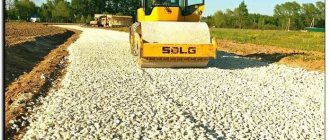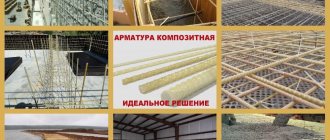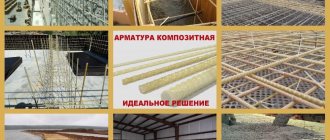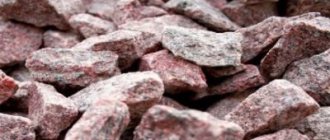Crushed stone belongs to the category of bulk materials widely used in the construction industry. It is obtained mechanically, as a result of crushing and distributing various rocks into fractions. The main characteristics of crushed stone include flakiness, along with strength, frost resistance and radioactivity. This material is used as an independent product or as a coarse aggregate in the manufacture of reinforced concrete and concrete structures. The fine fraction is used to create decorative finishing solutions.
How crushed stone is produced
The extraction of raw materials to create building materials takes place in mountainous areas, on rocks. The area is cleared of the top earthen layer. Vegetation cover in the mining area is eliminated. In a place that is clear of foreign objects, wells are drilled in a certain sequence. The depth of each shurpa reaches 20 meters. To crush the rock, the wells are filled with explosives.
To process the rock, it is brought to enterprises that specialize in crushing and sorting building materials. The machines crush the rock to the sizes required by GOST. The stones are subjected to screening—sorting individual pieces of material into fractions. The finished building material is packaged and delivered to hardware stores and industrial enterprises.
Placeholder functions
Being a large aggregate, crushed stone provides a number of advantages for future concrete:
- excellent adhesion to cement-sand mortar;
- a strong frame that will take all the loads of the solution;
- increased strength and elasticity of the solution;
- less chance of shrinkage;
- increase in frost resistance indicators;
- reducing the risk of deformation under load.
In order for future concrete to have high strength, reliability and meet long-term requirements, it is necessary to correctly approach the question of what crushed stone is used for concrete.
There are a few things to consider when choosing an aggregate. This is a classification of crushed stone: types and fractions.
Let's look at the main types used as filler.
What is flakiness?
As a result of rock crushing, a certain part of stones with parameters deviating from the norm is formed. In the general mass, needle-shaped and flat materials appear. This phenomenon is called flakiness.
It is almost impossible to prevent the formation of building materials with parameters different from the standards. This is explained by the imperfection of production technology and the different qualities of the rock. Single defective stones may be found in packaging with high-quality material. However, the use of a small portion of non-standard grains in construction work is safe.
Crushed stone with a defect content of up to 40% is used in the manufacture of flat-shaped concrete. The properties of the building material give the tiles fire resistance. The use of a blade in the construction of muffle furnaces is widespread. The characteristics of the tiles ensure that the hearth remains intact and protects against cracks and destruction.
Significant savings factor
In order to reduce overall costs when working with concrete mixtures, most builders use screening when it comes to private construction. When making a concrete mixture, screenings are used as a substitute for the base material, and the strength of the finished product only increases. It is also easier to work with, since the material fraction is equal to 0.5 mm. A simple replacement will not be enough, because the larger the grains, the less they will be needed to fill the resulting voids.
When laying a strip foundation, most of the large-caliber crushed stone can be replaced with smaller screenings. To achieve the most optimal result, it is recommended to carry out several regular batches, which will allow you to determine the strength of the resulting raw material. In some cases, it is possible to completely replace gravel with screenings, but we are talking about concreting a fence, blind area, garage or gazebo. This material cannot in any way fully replace sand, which makes the composition more sticky.
Lamellar and needle grains
Among non-standard copies of the material, two groups are distinguished. Lamellar elements include small but very wide elements. In needle-shaped granules, on the contrary, the length is three times the width.
The quality of the material depends on the proportion of non-standard stones in the package. For serious construction work, crushed stone with a low percentage of defective components is chosen. The strength of stones is determined by the content of lamellar (flaky) and needle-shaped grains. Non-standard elements do not withstand heavy physical loads and break under low pressure.
When is concrete preparation required?
The footing is a layer of thin cement laid between a layer of gravel or crushed stone and the body of the foundation. As a rule, the thickness of the pillow does not exceed 1 dm.
Thanks to it, the building rests securely on a stable foundation. This is what is most lacking in these situations:
- loose soils;
- existence of seismic hazard;
- close proximity to slopes, slopes and embankments;
- high compressive load from the building.
In addition to the basic purpose - a strong support for the structure - foundation preparation facilitates many stages of the process:
- Installation of prefabricated structures on a leveled surface is more convenient, and the results are accurate.
- High-grade concrete is consumed more economically when it is laid out on a flat, compacted base made of cheap material.
- On concrete it is easier to install a frame of reinforcement with maximum precision to make a monolithic foundation. A crushed stone cushion will not give such an accurate result.
- A special coating is created that prevents the penetration of moisture.
- Protection of concrete from loss of grade due to leakage of cement laitance, complete hydration of binder grains.
Groups of crushed stone
Depending on the properties, strength, and number of non-standard elements, building materials are divided into separate classes. The belonging of crushed stone to the group determines the market value of the product and the possibility of using stones in construction and other areas.
When dividing stones into categories, attention is paid to the flakiness and shape of the grains. These characteristics are important for determining the properties and strength of the material.
By flakiness
Stones are divided into five categories. The choice of a specific class depends on the number of defective items in the packaging of building materials.
The following groups of crushed stone are distinguished according to flakiness:
- V. Includes materials with a defect content of 35 to 50 percent of the total mass. Used for filling the road surface. It can be useful in the construction of temporary structures and light structures.
- IV. Contains 25-35% non-standard elements. The material is necessary for the manufacture of cement, flanges, and glass.
- III. The flakiness of the material of the third group ranges from 15 to 25 percent. This type of crushed stone includes limestone and soft crushed rocks.
- II. Includes 10-15% defective items. A small proportion of plate-like and needle-shaped particles allows the use of stones in the construction of buildings. The second group includes crushed gravel.
- I. The maximum percentage of non-standard elements is 10. The strength of the material contributes to its widespread use in serious construction work: the production of reinforced concrete structures, the manufacture of road surfaces. The low flakiness of granite crushed stone makes it a leader among other types of stones.
In construction stores you can find materials of the first and second groups. Their cost per ton ranges from 500 to 1200 rubles. Crushed stone of groups III, IV, V is rarely used and is purchased from private companies.
By shape
Different types of building materials differ in appearance. External characteristics affect the quality and properties of stones.
The following groups of crushed stone are distinguished according to the shape of the grains:
- Regular. The content of defective materials exceeds 25% of the total mass. Externally they can be flat and thin, in the form of a plate, or wide but short. Crushed stone of this group is rarely used for construction due to its fragility.
- Regular. Includes 15-25% non-standard items. Outwardly they resemble ordinary sharp-angled stones. They are a building material of below average quality.
- Improved. The percentage of defective elements is from 10 to 15. The shape is acute-angled or wedge-shaped. The material has an average level of strength and is used for construction and building the foundation of a building.
- Cuboid. Contains less than ten percent non-standard stones. The shape corresponds to the name; in appearance, the specimens resemble a square. The cubic shape of crushed stone suggests high quality material. It is used during heavy construction work and road construction.
The shape of crushed stone is one of the indicators of the quality and strength of the stone.
Cement quality check
Considering that cement is a very (if not the most) popular building material, the number of companies involved in its production is quite large. You need to understand that many irresponsible manufacturers (they are the ones who often offer cementitious building materials in bags on which no information is indicated) add ballast substances to cement, which only worsen its quality. These additives can be ground compacted cement, mineral powder - anything! How to prepare concrete for a foundation from such cement is a question that no specialist can solve. Unfortunately, it is not always possible to buy high-quality factory material, so below we will give an example of cement analysis “on the knees” - methods that, after all, allow us to determine the quality of cement. Naturally, only laboratory tests will allow an accurate assessment, but this is already unnecessary for an individual developer.
- assessment of the “freshness” of cement. If there is no manufacturing date on the packaging (it is better not to buy such cement at all), then first of all you need to check the degree of fossilization of the building material. This can be done by hitting the bag - the sensations should not resemble those of hitting a stone. It is also necessary to check the corners of the bag by touch, because... they turn to stone the fastest. We open the bag, inside you should find a homogeneous substance of gray color, which may differ in shades (from dark to light gray, maybe even greenish). Freshly prepared cement is fluid: it easily spills between your fingers. If you can make a snowball out of cement, which then easily crumbles, then this is a normal material. Did you find individual lumps in the bag? If they easily disintegrate under compression, then this only indicates that the cement has already had time to “sit down.” There is nothing wrong with this, but if the lumps crumble only when there is a significant impact on them, and they crumble into individual solid grains of sand, then it is better not to use such building material - it has already deteriorated;
- assessment of cement composition. For analysis, we need sodium bicarbonate (for example, Borjomi) or sodium chloride bicarbonate (Essentuki No. 4 or No. 17) mineral water. We open the bottle, let the water “exhale” - we rid it of carbon dioxide. Next, we put on rubber gloves and use mineral water to mix cement paste from the test sample of cement. From the resulting dough you need to make a “cake” with a diameter of about 15 cm, with a thick central part (about 5 cm) and thin edges (up to 1 cm). The setting of truly high-quality cement is observed no later than 10 minutes, and the thickened part of the “cake” will heat up noticeably. It is also possible to change the shade of the cement paste - it acquires a blue-green tint. All this indicates that the cement does not contain additives - d0. On the contrary, if setting is not observed for half an hour or more, then you should worry. As a rule, this indicates the low quality of the binder and the presence of foreign impurities: the “cake” becomes covered with cracks when setting, hardens in fragments, and does not heat up. Just in case, we place the test sample in a plastic bag and put it in a warm place for a day. If after 24 hours the sample has lost its shape and has significant cracks, then the cement did not live up to our expectations - it is better to get rid of it immediately...or use it at your own peril and risk. It is quite possible that the use of low-quality cement will subsequently result in the need to strengthen foundations with cementation and other expensive work.
Formula for calculating flakiness
The proportion of non-standard elements is calculated manually. The number of lamellar and needle-shaped stones is calculated using the following formula: Sl = (m1/m2)*100%.
In the above expression, m1 denotes the number of non-standard particles in kilograms. The m2 value is the mass of the product. Finally, the result of the division is multiplied by 100% to convert the number to a percentage.
The flakiness of crushed stone shows the number of standard components in the composition of the building material. Durable stone has a low defect rate. The use of materials with a flakiness percentage higher than 15 in heavy construction is not recommended.
Method of determination
Without special tools and a strict procedure, it is impossible to determine the flakiness of crushed stone. The main device for determining the category is a caliper, the dimensions of which when opened should have a ratio of 1:3.
The point of testing is to split the experimental sample into “correct” and “incorrect” stones with the utmost possible accuracy. After sorting is completed, they are weighed and the ratio of flank elements in a single mass of crushed stone is calculated. The smallest amount of material to test depends on the size of the crushed stone grains.
If the rock consists of many different fractional elements, then before testing it is passed through special sieves that have numbered cells. It is clear that the lower the flakiness, the better the quality indicators and cost of the material. Don't underestimate this fact. After all, inconsistency between the elements of filling concrete solutions can lead to excessive consumption of material or to significant losses due to rapid destruction of the structure.
Results
Based on the foregoing, we can conclude that crushed stone, and each type of it in particular, is an indispensable material in the construction of various structures, such as roads, residential buildings, massive concrete structures, and railway tracks.
This is often used by landscape designers in their projects. also worth remembering how useful it is to be able to calculate the density coefficient of a given material, which will give you the opportunity to rationally and competently build a plan for the upcoming work.
Taking into account the features of this material, its characteristics and distinctive properties, with the help of correct calculations you can get the maximum benefit from working with it.
Granite
Granite filler, considered the most durable, is a non-metallic material that is extracted from hard rocks (natural granite).
Scope of application:
- construction of roads and laying embankments on railway tracks;
- laying road surfaces and sidewalks;
- construction of reinforced concrete structures;
- production of high-strength concrete;
- construction of walls, floor slabs and columns that experience heavy loads;
- laying the foundation.
Due to the fact that this type is considered the most durable, concrete on granite crushed stone will be the most reliable.
3DEFINITIONS
The following terms are used in this standard.
Crushed rocks
- inorganic granular bulk material with grains of coarseness. 5 mm, obtained by crushing usable rocks, gravel and boulders, simultaneously mined overburden and containing generated substandard waste from mining enterprises for processing ores (ferrous, non-ferrous and rare metals of the metallurgical industry) and non-metallic minerals from other industries and subsequent sieving of crushing products.
Rock gravel
- inorganic granular bulk material with grains of coarseness. 5 mm, obtained by sieving natural gravel-sand mixtures.
Frost resistance
Allows you to understand within what temperature limits it is allowed to use different types of crushed stone.
Frost resistance is designated as F, and the number following it indicates freezing and thawing cycles (measurement occurs during laboratory tests, which determine exactly how many cycles stone grains can withstand without losing their performance properties).
Within the framework of frost resistance, crushed stone grades are distinguished from F15 to F400. The higher the number, the better the quality of the material.
In the case of use under the foundation of buildings, it is better to use crushed stone marked F250-F300 (granite or crushed gravel).
Gravel
This type of crushed stone is obtained by crushing in natural rocks and further sifting the rocks in a quarry.
In turn, crushed gravel is divided into subtypes:
- rounded (under the influence of sea or river water);
- chopped or crushed.
The main areas of application are:
- filling reinforced concrete structures;
- landscape design;
- creation of pedestrian paths and platforms;
- leveling surfaces and embankments.
Crushed gravel concrete is characterized by lower strength compared to granite, and therefore the cost will be less.
Preface
1 DEVELOPED by the VNIPIIstromsyryo Institute with the participation of VNIIzhelezobeton, NIIZhB, SoyuzDorNII of the Russian Federation
2 INTRODUCED by the State Construction Committee of Russia
3 ADOPTED by the Interstate Scientific and Technical Commission for Standardization and Technical Regulation in Construction (INTKS) on November 10, 1993.
The following voted for adoption:
| State name | Name of the state construction management body |
| The Republic of Azerbaijan | State Construction Committee of the Azerbaijan Republic |
| Republic of Armenia | State Architecture of the Republic of Armenia |
| Republic of Belarus | Gosstroy of the Republic of Belarus |
| The Republic of Kazakhstan | Ministry of Construction of the Republic of Kazakhstan |
| Republic of Kyrgyzstan | Gosstroy of the Kyrgyz Republic |
| The Republic of Moldova | Ministry of Architecture and Construction of the Republic of Moldova |
| Russian Federation | Gosstroy of Russia |
| The Republic of Tajikistan | State Construction Committee of the Republic of Tajikistan |
| The Republic of Uzbekistan | State Committee for Architecture and Construction of the Republic of Uzbekistan |
4 ENTERED INTO EFFECT on January 1, 1995 as a state standard of the Russian Federation by Decree of the State Construction Committee of Russia dated June 17, 1994 N 18-43
5 INSTEAD OF GOST 8267-82, GOST 8268-82, GOST 10260-82, GOST 23254-78, GOST 26873-86
6 EDITION (July 2022) with Amendments No. 1, 2, 3, 4, adopted in February 1998, January 2000, June 2002, December 2008 (IUS 5-98, 5-2001, 10-2002, 6-2009)
Information about changes to this standard is published in the annual information index “National Standards”, and the text of changes and amendments is published in the monthly information index “National Standards”. In case of revision (replacement) or cancellation of this standard, the corresponding notice will be published in the monthly information index “National Standards”. Relevant information, notices and texts are also posted in the public information system - on the official website of the Federal Agency for Technical Regulation and Metrology on the Internet (www.gost.ru)











